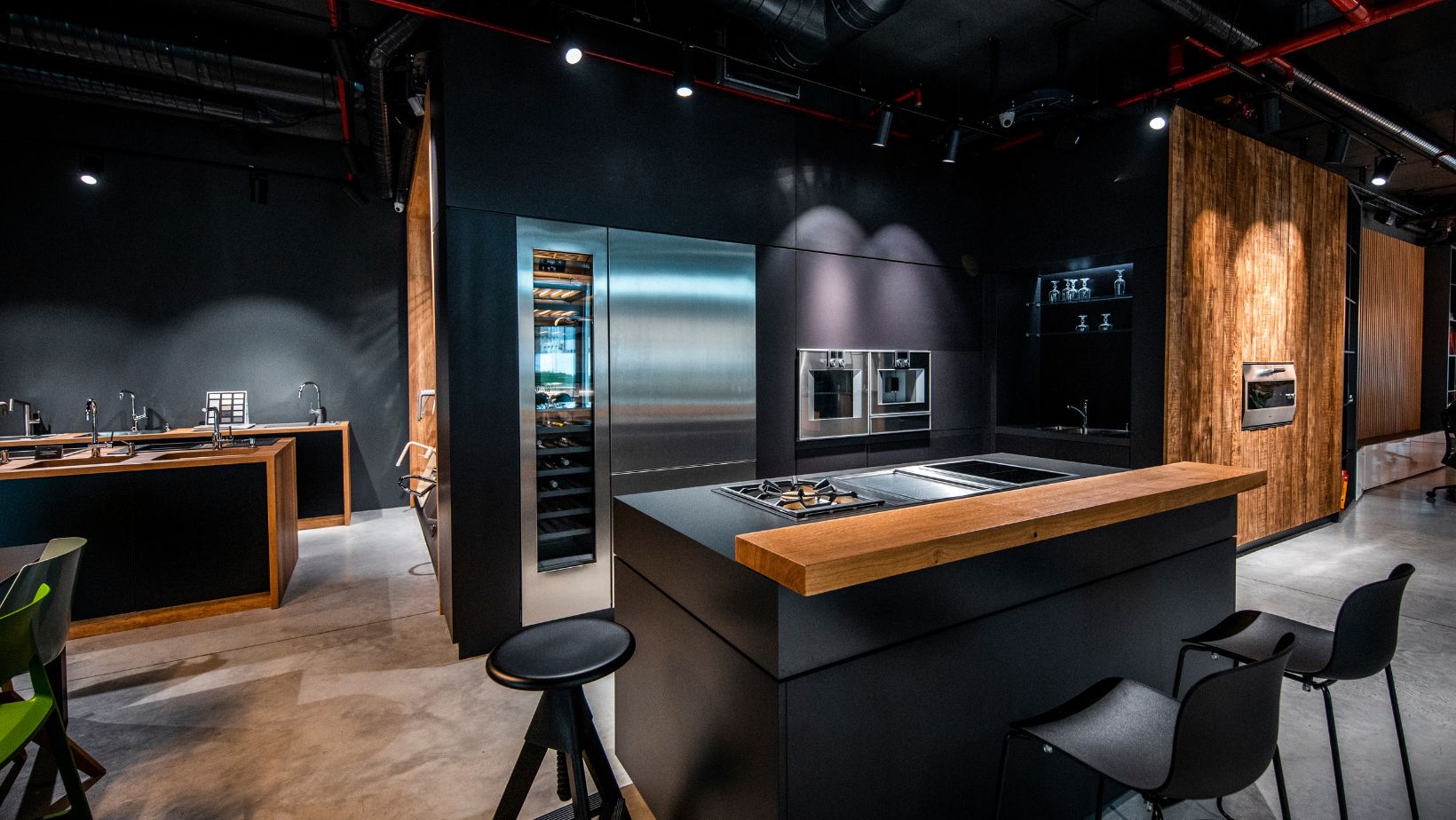Gothic aesthetics in interior design is a fascinating genre celebrated for its dramatic, moody, and often opulent sensibilities. Far from being a monolithic style, Gothic design has evolved into various subgenres, each bringing its own unique spin on the dark elegance that defines this aesthetic, from the brooding sophistication of Traditional Gothic to the minimalist allure of Modern Gothic.
The Quintessential Dark Elegance
Traditional Gothic interior design is rooted in the grandeur of medieval European architecture, characterized by its elaborate ornamentation, pointed arches, and a palette dominated by deep, rich hues. This style often features heavy wooden furniture with intricate carvings, stained glass windows, black wooden floors, and ornate chandeliers that cast a dim, mysterious glow over the space. The atmosphere is one of opulence and sombreness, with dark tones like burgundy, deep green, and black playing central roles.
Incorporating Traditional Gothic into modern homes can be achieved through the use of antiques or antique-inspired pieces, velvet draperies, and large, ornate mirrors. The goal is to evoke a sense of history and drama, making the space feel like a grand, if slightly eerie, retreat.
Romance Meets Macabre
Victorian Gothic is a subgenre that blends the romantic elements of the Victorian era with the darker, more mysterious aspects of Gothic design. It emerged during the 19th century when Gothic Revival architecture became popular, and it carries forward the Victorian love for intricate details and luxury.

This style often features dark floral wallpapers, ornate fireplaces, and plush furnishings in deep, saturated colors like emerald, crimson, and navy. The overall feel is one of luxurious comfort with a touch of macabre, often incorporating elements like taxidermy, dark wood paneling, and heavy drapery.
To bring Victorian Gothic into your home, focus on adding details that combine luxury with a hint of darkness. Velvet cushions, elaborate chandeliers, and Victorian-style furniture are key components. Layering textures, such as lace and velvet, and incorporating vintage accessories can also enhance the Gothic Victorian vibe.
The Architectural Heritage
Gothic Revival is intricately linked to the architectural movement of the same name that sought to revive medieval Gothic architecture in the 18th and 19th centuries. This style emphasises verticality, with tall windows, pointed arches, and intricate tracery.
In interior design, Gothic Revival often manifests in the form of high ceilings, parquet flooring, stone or brick walls, and furniture that echoes the grandeur of Gothic cathedrals. The color palette remains dark but with the occasional use of jewel tones to add depth and interest.
To capture the essence of Gothic Revival in your space, consider incorporating large, statement-making pieces like a four-poster bed or an intricately carved wooden table. Decorative elements like gargoyles, wrought iron accents, and richly patterned textiles can also help to create the imposing yet elegant atmosphere characteristic of this subgenre.
Minimalism Meets Mystery
Modern Gothic is a contemporary take on traditional Gothic elements, fusing them with the clean lines and minimalism of modern design. This subgenre retains the dark and moody palette of Gothic design but pares down the ornamentation in favor of sleek, sophisticated lines.
Key features of Modern Gothic interiors include dark, matte finishes, monochromatic color schemes, and a mix of textures like leather, metal, and glass. The result is a space that feels mysterious and edgy without being overly ornate.

To achieve a Modern Gothic look, focus on simplicity with a dark twist. Black, grey, and deep shades of blue are dominant, with metallic accents to add a touch of glamour. Furniture should be modern and streamlined, with a focus on high-quality materials that offer a sense of luxury. Minimalist art with dark themes or abstract designs can also enhance the Modern Gothic aesthetic.
The Fusion of Raw and Refined
Industrial Gothic combines the raw, unfinished look of industrial design with the moody elegance of Gothic aesthetics. This subgenre is characterized by the use of exposed brick, metal, and wood, juxtaposed with dark, luxurious fabrics and gothic motifs.
In an Industrial Gothic space, you might find a combination of rugged elements like steel beams and concrete floors, softened by plush velvet sofas and dramatic lighting. The contrast between the industrial and the gothic creates a unique, edgy atmosphere that is both functional and visually striking.
To incorporate Industrial Gothic into your home, focus on blending rough textures with opulent details. A metal-framed bed with a velvet headboard, industrial-style lighting fixtures, and dark, moody artwork are all great ways to bring this look to life.
